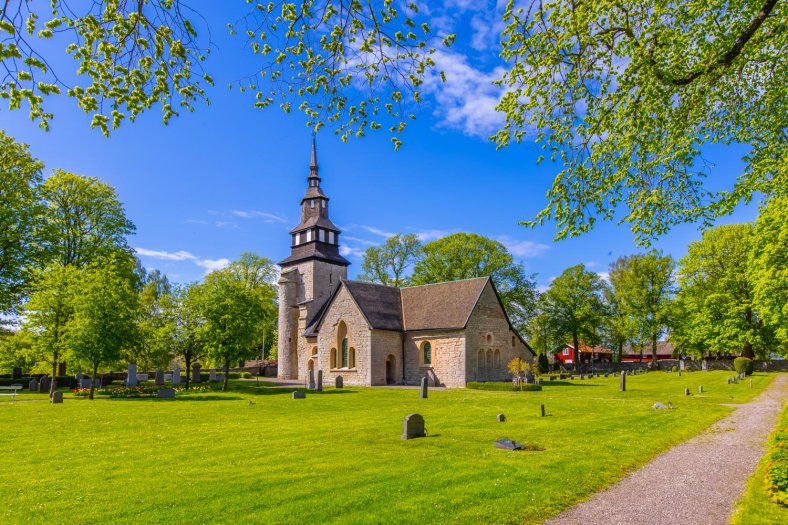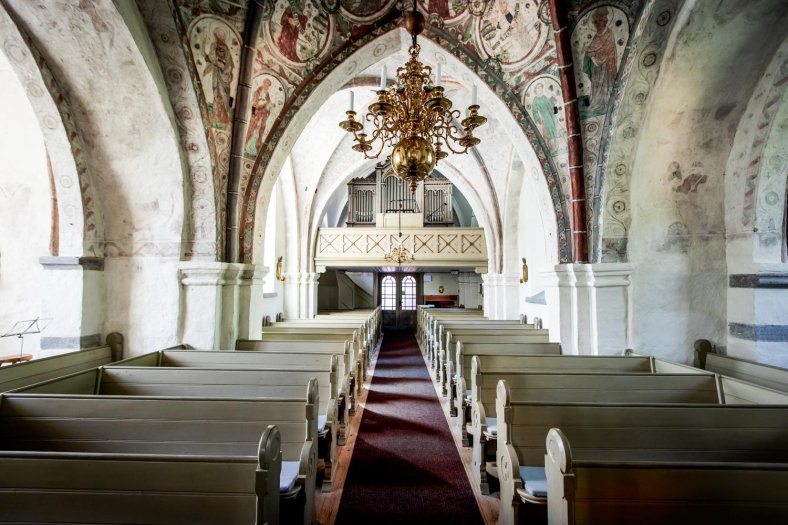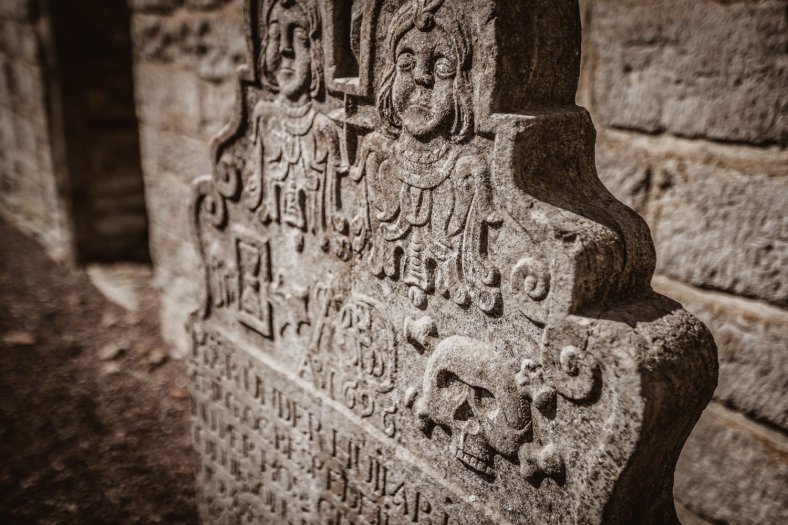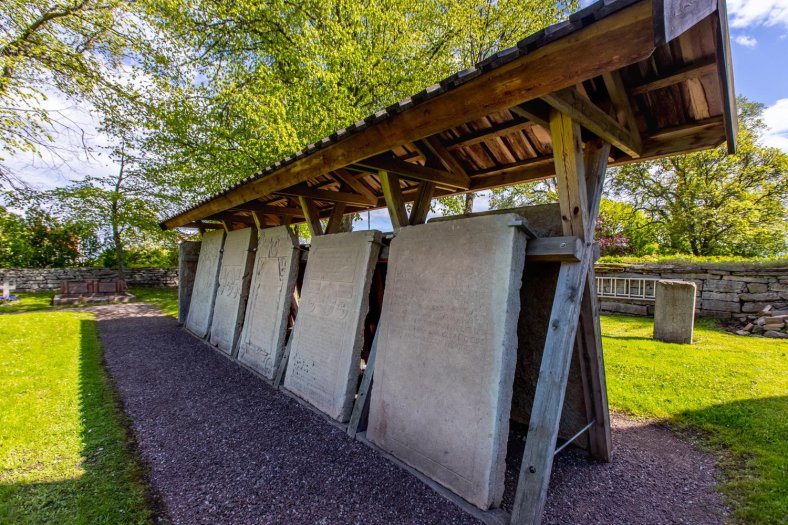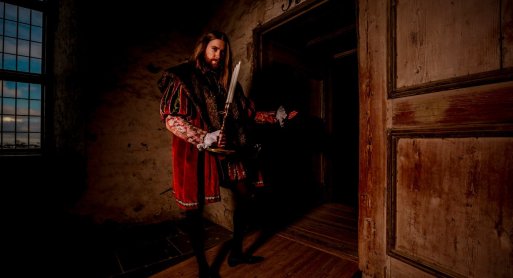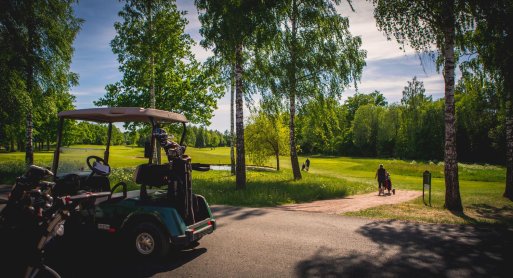Örberga church
Örberga church is located a bit west of Vadstena - perfect distance for a bike ride. Along the way, alleys, yellow rapeseed fields and lush hills await.
Örberga's current church, in limestone, was probably preceded by a wooden church. The preserved stone church was built in the early 12th century. The oldest parts are the tower and the nave. Dendrochronological examination of wood in the tower shows that the trees for the logs were felled in the winter of 1116-1117. The church is thus one of Sweden's oldest church buildings.
The cross arms date from the mid-13th century. The tower with its semi-circular stair towers is, alongside the Husaby church tower, the only one of its kind preserved. The tower spire was erected in 1750 after a bee strike destroyed the medieval spire. The church's old main entrance in the south wall of the nave has been removed and partially reconstructed.
When the porch at the entrance was demolished in 1816, a new entrance was built on the west side through the tower. The sacristy on the north side was probably added in the early 15th century. At the same time, the vaults of the church were also built. The vaults have paintings by the so-called Risinge Master. The choir's frescoes depict scenes from the Creation story, the Old Testament and the Fall. The paintings were made in the early 15th century.
The church's uniform interior, with pews, benches, pulpit and organ, was added during restoration in 1885. The altarpiece is one of the oldest pieces of furniture in the church, as is the cup of the font. The central part of a medieval altar cabinet remains, depicting Christ on the cross surrounded by Mary and John. Other figures in the oak cabinet include St. Bridget, with book and pen. A very unusual communion chalice, only 5 cm high, has been found. It is probably connected to a traveling altar, which the church owns.
The arched wall around Örberga cemetery is one of the few that has been largely preserved since the Middle Ages. It is built in shell wall technique with outer sheaths of limestone squares and a masonry core with lime mortar. The masonry is covered with limestone tiles, and there used to be a protective wooden roof. Variations in the workmanship of the masonry and several construction joints indicate that the farms in the parish were responsible for the construction and maintenance of their respective sections of the wall. Parts of the wall have been restored in 2010 and 2011.
Source: Church of Sweden
